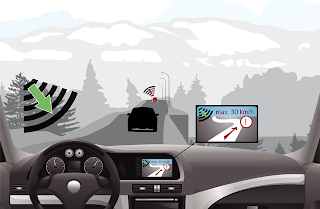An electronic brake light developed by Ford

Ford Motor Company participated in a special test of a high-tech early warning “brake light” that can warn drivers following behind even if they are around a bend or behind other traffic. It was during the simTD (Safe Intelligent Mobility – Testfield Germany), a four-year joint industry research project in Germany. Engineers from Ford’s European Research Centre in Aachen, led the development, testing and data analysis. In emergency braking situations, the experimental “Electronic Brake Light” transmits a wireless signal to illuminate a dashboard light in cars following behind. The study found the technology could enable drivers following behind to brake earlier and potentially mitigate or avoid a collision.






